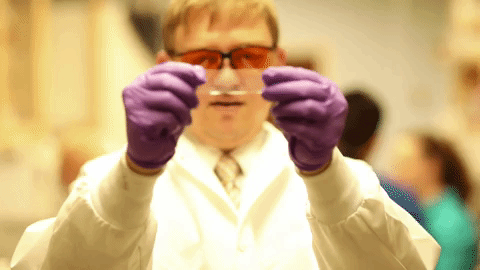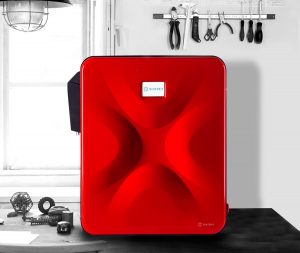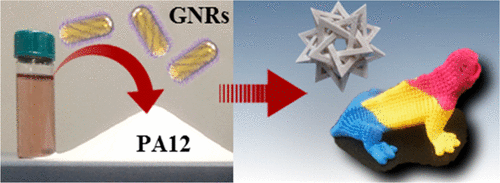A recent series of major developments and events has created a new impetus for 3D printing plastic recycling. 3D printing of recycled plastics has multiple benefits, including lower costs and control over the amount of materials that can be used by 3D printers. Currently, 3D printing filament is produced by melting down virgin plastic pellets and extruding the melted plastic through a circular die which is then rolled up into spools. Printing with pellets or recycled materials is more cost effective and energy efficient than printing with new plastic filaments. In addition, direct printing of plastic pellets eliminates the need for further processing and therefore makes them less expensive.
Plastic has always been one of the leading 3D printer material categories. Now there is an expanding global concern about the amount of plastic product waste and in particular its negative impact on oceans and waterways. Improved pellet 3D printing recycling technology can play an important part in helping solve this environmental problem. 3D printing product developers, engineers, designers and environmentalists working on pellet recycling projects have the opportunity to earn US R&D tax credits.
The Research & Development Tax Credit
Enacted in 1981, the now permanent Federal Research and Development (R&D) Tax Credit allows a credit that typically ranges from 4%-7% of eligible spending for new and improved products and processes. Qualified research must meet the following four criteria:
- Must be technological in nature
- Must be a component of the taxpayer’s business
- Must represent R&D in the experimental sense and generally includes all such costs related to the development or improvement of a product or process
- Must eliminate uncertainty through a process of experimentation that considers one or more alternatives
Eligible costs include US employee wages, cost of supplies consumed in the R&D process, cost of pre-production testing, US contract research expenses, and certain costs associated with developing a patent.
On December 18, 2015, President Obama signed the PATH Act, making the R&D Tax Credit permanent. Beginning in 2016, the R&D credit can be used to offset Alternative Minimum tax for companies with revenue below $50 million and for the first time, pre-profitable and pre-revenue startup businesses can obtain up to $250,000 per year in payroll taxes and cash rebates.
The Growing Scale of the Problem
The March 2018 issue of the Economist contained three articles devoted to the plastic waste environmental issues. Since the 1950s, humans have created 8.3 billion tons of plastic. According to the Economist since the 1950s, 7 to 9% has been recycled. In 2015, it is estimated that humans have generated 8.3 billion tons of plastic, 6.3 billion tons of which has already become waste. If the trends continue, then 12 billion tons of plastic waste will be in landfills.
Global production of plastics has increased from 2 million metric tons in the 1950s to over 400 million metric tons in 2015, most of which are man-made materials. Plus, half of all the plastics that are used become waste after four years. The plastic production in the US doesn’t show signs of slowing.
A team of researchers led a study in 2015 that calculated the amount of plastic waste that drains into the oceans. The results showed that 8 million metric tons of plastic lay in the oceans in 2010. Indonesia is the world’s second biggest plastics polluter. They have pledged to decrease plastic waste in the ocean by 75% by 2025, however some observers doubt that legal rules will be able to enforce and achieve such goals. Last year the government called for a “garbage emergency” where cleaners and trucks were deployed to collect rubbish off the shoreline.
The repercussion of plastic fragments in marine waters is alarming. For the most part, this pollution is not in the form of large, visible containers, but rather small particles. Two main types of small particle plastic pollutants are common in the environment: microfibers and microbeads. Most plastic is not a biodegradable material and when it is exposed to the sun’s UV radiation, it will break down into microfibers. Aside from degradation, these microfibers are produced at industrial quantities as polyester fabrics that are used to create durable and stretchy fabrics. Microfibers enter the water stream when polyester fabrics are washed, and only a fraction is caught by waste treatment facilities. It is estimated that a washing machine could release more than 700,000 microfibers into the environment. Microbeads are less than 5 millimeters long and are added as exfoliants to health and beauty products. Others come from plastic pieces that are degraded over time. In recent years, countries have taken initiatives to ban the sale of products containing microbeads, but this is only a fraction of the plastic waste entering the water stream.
Here are some recent developments involving plastic waste:
- Coca-Cola’s announcement that they are committed to 100% recycling by the year 2030
- China’s new law prohibiting the importation of plastic waste
- Major NGO efforts to address the problem including the MacArthur Foundation
- Study finds plastic water bottles contain micro plastics
- Improvements in 3D printer recycling technology
The Coca-Cola Announcement
 In its January 19th “World Without Waste” announcement, Coca-Cola pledged to recycle 100% of packaging by 2030. Coca-Cola has been a long-time thought leader on environmental issues and previously led efforts for major reductions in water consumption. The company is embracing a multi-faceted approach including material reduction, reuse and recycling. Coca-Cola produces an estimated 110 billion plastic bottles a year, of which the majority around the world ends up in landfills, beaches, and in the ocean.
In its January 19th “World Without Waste” announcement, Coca-Cola pledged to recycle 100% of packaging by 2030. Coca-Cola has been a long-time thought leader on environmental issues and previously led efforts for major reductions in water consumption. The company is embracing a multi-faceted approach including material reduction, reuse and recycling. Coca-Cola produces an estimated 110 billion plastic bottles a year, of which the majority around the world ends up in landfills, beaches, and in the ocean.
The Coca-Cola Company announced in January of this year that by 2030, for every bottle they sell they will recycle the equivalent number of bottles. If the plastic waste problem is not solved, Coca-Cola’s CEO said that if Coke can manage to recycle the equivalent of 100% of its packaging, then “there’s no such thing as a single-use bottle.” If plastic is not solved, then the oceans and waterways will suffer. If Coca-Cola is successful in this endeavor, presumably beverage companies and packaged goods companies will follow their lead.
China: No More Western Garbage
 As of January 1, 2018, China has banned the importation of 24 categories of waste including plastic waste. China’s government is enacting a plastic waste import ban which is in an attempt to cut down millions of tons of plastic and other recyclables each year. China doesn’t want to be the “world’s garbage dump” as they recycle about half of the globe’s plastics and paper products. Therefore, they are figuring out ways to reduce the waste.
As of January 1, 2018, China has banned the importation of 24 categories of waste including plastic waste. China’s government is enacting a plastic waste import ban which is in an attempt to cut down millions of tons of plastic and other recyclables each year. China doesn’t want to be the “world’s garbage dump” as they recycle about half of the globe’s plastics and paper products. Therefore, they are figuring out ways to reduce the waste.
The ban includes plastics, slag from steel making, unsorted scrap paper and discarded textiles. According to China’s WTO, the list has been adjusted to protect both the environment and people’s health. China has been importing loads of waste used as raw materials in industrial production. Last year, China imported 7.3 million tons of plastic waste, nearly half of all world plastic imports. The volume of some waste categories are so great that the new import ban is causing a reverse supply chain waste back up. The best way for the Western waste producers to tackle the problem is to reduce the amount of underlying waste created at the source. Domestically, one compelling use case is to convert plastic waste to 3D printer pellets for the creation of new products.
According to a recent study, China is the country that mismanages the most amount of plastic waste.

NGO Efforts to Address Plastic Waste
In 2016, 90 NGOs joined together to fight plastic waste. It is important for the NGOs fighting plastic waste to learn more about 3D pellet printing technological developments. Three of the major NGOs with plastic waste initiatives are described below:
Ellen MacArthur Foundation
The Ellen MacArthur Foundation provides a vision for the global economy. The MacArthur Foundation is using the principles of the circular economy to bring together the stakeholders to rethink and redesign the future of plastics by starting with packaging. The circular environment will prevent waste and make sure that products will be recycled. Most plastic packaging is used once, which is 95% of the value of plastic packaging material and worth between $80-120 billion per annum. Given projected growth in consumption, by 2050, the oceans are expected to contain more plastic than fish and the entire plastics industry will consume 20% of total oil production and about 15% of the annual carbon budget.
UN
The UN is looking to solve the micro plastic dilemma and reduce marine litter. The UN has drafted goals to decrease plastic waste and marine plastic pollution by 2025. The draft outlines these three key points:
- The importance of long-term elimination of litter in oceans and of avoiding detriment to marine ecosystems
- Urge other organizations to get involved and join the movement against marine pollution
- Encourage all Member States to prioritize policies to avoid marine litter and microplastics from entering into the marine environment
The life in the seas is a “planetary risk” and the UN hopes to send a powerful message that changes the way the world consumes, produces, and tackles pollution. For instance, in Kenya, there is a turtle hospital which treats animals that have ingested plastic waste. In Tanzania, there is plastic waste that litters the coast. Plastic rings and rims of plastic bottle caps have bite marks on them demonstrating that fish have nibbled on them thinking it was potential food. Local townspeople try to clean the filth up, however it is difficult to keep the beaches clean with the amount of waste that washes up on the shore. Some environmentalists feel it is too large a problem to be able to solve by 2025.
Greenpeace
 Greenpeace is an NGO with offices around the world including the US, Amsterdam and Scotland. Greenpeace has been observing the coastlines of Scotland to find plastic waste in the environment. Plastic is harmful for marine life including fish, seabirds, and other animals. Plastic has been found at shark feeding grounds, and in Scotland, it is now being discovered in the beaks of seabirds. The NGO is working with the country’s environment secretary, Roseanna Cunningham, to introduce a deposit return scheme for drink containers in Scotland.
Greenpeace is an NGO with offices around the world including the US, Amsterdam and Scotland. Greenpeace has been observing the coastlines of Scotland to find plastic waste in the environment. Plastic is harmful for marine life including fish, seabirds, and other animals. Plastic has been found at shark feeding grounds, and in Scotland, it is now being discovered in the beaks of seabirds. The NGO is working with the country’s environment secretary, Roseanna Cunningham, to introduce a deposit return scheme for drink containers in Scotland.
Micro plastics
A study conducted by scientists at the State University of New York (SUNY) in Fredonia found that 93% of 259 water bottles contain micro plastic. Bottles of Aqua, Aquafina, Bisteri, Dasani, Epura, Evian, Nestle Pure Life, San Pellegrino and Wahaha water from India, Indonesia, Kenya, Mexico and the US were sampled, and the researchers identified 325 particles of micro plastic per liter of water. In one study, it was discovered that in one bottle of Nestle Pure Life, the concentrations reached about 10,000 plastic pieces per liter of water. Out of the 259 bottles that were tested, only 17 were plastic free. This is a growing concern among health specialists and more analyses need to be done to prove how detrimental this is for one’s health. A truckload of plastic enters the ocean every minute. Plastics are building up in marine animals which means that humans are also exposed. The micro plastics that are found in the oceans and the toxic chemicals in plastics are creating threats to the environment and its inhabitants. It is essential for individuals to be vigilant about recycling and start using 3D printers which recycle plastic waste.
3D Printer Recycling Plastic Technology
 3D printing with pellets provides an alternative way to develop objects instead of reverting to plastic filaments. Due to the lower cost, individuals are able to print with higher-quality materials for the same price as a filament counterpart. However, small, low-cost machines are available that allow for local production of 3D printing filament from pellets or recycling at a reasonable cost.
3D printing with pellets provides an alternative way to develop objects instead of reverting to plastic filaments. Due to the lower cost, individuals are able to print with higher-quality materials for the same price as a filament counterpart. However, small, low-cost machines are available that allow for local production of 3D printing filament from pellets or recycling at a reasonable cost.
 Engineering students at the University of British Columbia in Canada created the Protocycler which takes plastic water bottles and recycles them back to usable form. In addition, the Filabot is another filament extruder that has been on the market since 2013. These extruders grind the pieces, melt them down, and extrude the plastic filament on a spool. This provides an opportunity for individuals to easily recycle their plastic waste. Instead of throwing out your food container, you can put your plastic waste in the extruder and then make your own plastic spool that you can later print with again. Printing from recycled materials with Protocycler or the Filabot provide an estimated 90% cost savings on every spool that is printed.
Engineering students at the University of British Columbia in Canada created the Protocycler which takes plastic water bottles and recycles them back to usable form. In addition, the Filabot is another filament extruder that has been on the market since 2013. These extruders grind the pieces, melt them down, and extrude the plastic filament on a spool. This provides an opportunity for individuals to easily recycle their plastic waste. Instead of throwing out your food container, you can put your plastic waste in the extruder and then make your own plastic spool that you can later print with again. Printing from recycled materials with Protocycler or the Filabot provide an estimated 90% cost savings on every spool that is printed.
 The fully automatic operation, combined with real-time diameter feedback, means that anyone can get perfect filament every time they use the device. Small-scale extrusion also disposes of any extra waste that is usually the byproduct from printing. The extruder “closes the loop”, by taking the failed prints and allowing them to be used again to 3D print objects.
The fully automatic operation, combined with real-time diameter feedback, means that anyone can get perfect filament every time they use the device. Small-scale extrusion also disposes of any extra waste that is usually the byproduct from printing. The extruder “closes the loop”, by taking the failed prints and allowing them to be used again to 3D print objects.
Protoprint is a company in India that uses 3D printing as a way to rid their waste and separate recyclables. There are filament sites at garbage dumps and they have developed and trained a network of waste pickers to sort and process the plastic. Once the waste is sorted, they are brought to the shed where they pass through a sorting and grinding machine which converts the plastic into pellets or flakes. The flakes are then passed through the refill-bot which uses a mechanism to create the recycled filament, which is spun on a spool to be used for later use. Protoprint has discovered that this low-cost technology is able to produce a plastic filament which then can be used in 3D printing.
Conclusion
The global community is focusing on problems related to plastic waste both on land and in our oceans. Plastics are the most common type of trash found in the sea. This is a perfect time for filament producers and product designers to offer their recycling solutions. The large volumes of this excess material make it particularly important to develop large footprint plastic products such as car parts, carpets, fencing, and infrastructure products using recycled waste. R&D Tax Credits are available for product designers and engineers who engage in this important effort.
Discuss this and other 3D printing topics at 3DPrintBoard.com or share your thoughts below.
Charles Goulding & Steve Kelly of R&D Tax Savers discuss plastic recycling.
 In the lab, Dr. Voit and his team study the physics of polymers and the properties of mixing compounds and ratios. In addition to the development of ToughRubber, the team has made several fascinating discoveries through their work. For example, they worked with a sulfur-hydrogen group called thiols, which have a rapid reaction with other components. The team discovered how to change this reaction to the thiol groups using the right combination of monomers, oligomers, dyes, inhibitors, initiators, sensitizers, and fillers, resulting in materials that can produce strong and durable 3D printed products.
In the lab, Dr. Voit and his team study the physics of polymers and the properties of mixing compounds and ratios. In addition to the development of ToughRubber, the team has made several fascinating discoveries through their work. For example, they worked with a sulfur-hydrogen group called thiols, which have a rapid reaction with other components. The team discovered how to change this reaction to the thiol groups using the right combination of monomers, oligomers, dyes, inhibitors, initiators, sensitizers, and fillers, resulting in materials that can produce strong and durable 3D printed products.






































